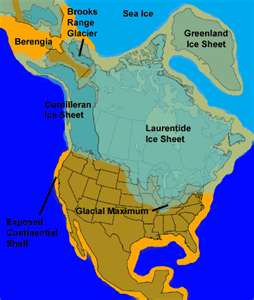Part III - Moraines
The Oak Ridges Moraine probably formed in the Late Wisconsonian glacial period. Ice melt from the Niagara Escarpment flowed into the western boundaries of the
moraine, wherein conduits beneath the ice expanded to form a west-to-east passage between the main Laurentide ice sheet and a mass of ice in the Lake Ontario basin.
Stratified sediment was deposited rapidly on the high-relief erosional surface. Up to 150 m (500 ft) in some areas, the deposits occurred on surfaces defined by highly
eroded channels and drumlin uplands. The channel tunnels were primarily created by the erosion from glacial rivers, a typical process before moraine formation.
Characteristic of this moraine is the transition of deposition layers from glaciofluvial to glaciolacustrine. Sedimentary glaciofluvial areas form the core of the
Oak Ridges Moraine, though restricted to subglacial cavity fills of confined subaqueous fans. Overlaying this core is a glaciolacustrine sedimentary layer that is
younger and topographically lower, principally in the delta and basin areas of the moraine.
In the late stages of its development, random unstratified accumulation (known as diamicton) occurred along the ice margins. Whereas the glacial river deposits were
more substantial by volume, the diamicton deposits represent a greater portion of the moraine's exposed surface. Research suggests that sedimentation occurred in a
west to east sequence along the four main sedimentary wedges: Albion, Uxbridge, Pontytool and Rice Lake. The wedges may have formed in a relatively short period
of time, perhaps no more than a few hundred years, as indicated by the annual deposition cycles in glacial lakes (known as varves) within the moraine sediments.
However, the lowest beds in the moraine may have experienced synchronous sedimentation.
Click for Home Page =>
Home Page

